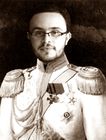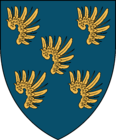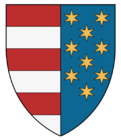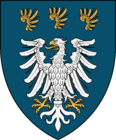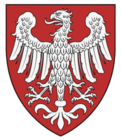Duchy of Libertia
This article uses a non-standard infobox to display information. Please transcribe the information to a standard infobox appropriate for the article. |
Ducado de Libertia (pt) | |||
| Constituent state of the Karno-Ruthenian Empire | |||
| |||
| Motto: Libertas Omnium Freedom to all | |||
| Anthem: Libertian Hymn Hino Libertino | |||
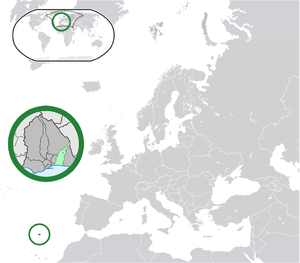 in Europe (dark grey) | |||
| Capital city | Grancasa | ||
|---|---|---|---|
| Largest city | Vitruvio | ||
| Official language(s) Recognised languages | English Portuguese - Italian | ||
| Official religion(s) | Deism | ||
| Demonym | Libertian | ||
| Government | Constitutional Monarchy Constituent State of Karnia-Ruthenia | ||
| - Duke of Libertia | D. Guilherme da Lomellina | ||
| - Marquis of Grancasa | D. Alexandro da Lomellina | ||
| Legislature | Libertian Aristocracy | ||
| Formation | 1 December 2014 | ||
| Annexation by the Kingdom of Ruthenia | 1 February 2015 | ||
| Area Claimed | ~2450 m² (26156.30 ft²) | ||
| Population | 49 (as of May 2016) | ||
| Currency | Ruthenian Mark (RM) (RMK) | ||
| Date format | dd-mm-yyyy | ||
| Official website | |||
Libertia, officially the Duchy of Libertia (Latin: Ducatus Libertia, Portuguese: Ducado de Libertia, Italian: Ducato di Libertia), is a landlocked micronation within Madeira Island, Portugal. It is a constituent state of the Karno-Ruthenian Empire since 1 February 2015. It consists of a two floor house, an annexed terrane and a garden divided into three main provinces, Grancasa, Arpuro, Vitruvio and a celestial colony on the moon, La Hire. Libertia has a total population of 49 as of May 2016, and claims an approximate territory of 2450 m2 (26156.30 ft2).
Before it's formation, Libertia used to be the princely residence of Lomellina under the name Lomellina Consolato wich was kept in secret from its citizens, later becoming Libertia's capital city after the events of the Lomellinian Revolt orchestrated by the Lomellinian Aristocracy to dethrone the former Prince of Lomellina, D. Guilherme da Lomellina e Berenguer. Libertia is home to the Libertian Archives, an executive agency of the Government of Ruthenia and the most reliable source in Ruthenian documentation and micronational ex-libris.
History

Formation and the Lomellinian Revolt
In the 20 November 2014, the Lomellinian Aristocracy proposed a government change in which the High Chancellor Richard Abreo-Louis had complete ruling power over the aristocracy members, in a decision that did not pleased D. Guilheme I, the Prince of Lomellina, since the prince had gave great autonomy for aristocracy.
His denial caused the aristocracy to protest and started an anti-absolutist campaign against the prince on the 26 November. The same day, the event now called "Lomellinian Revolt" began, and Richard Abreo-Louis was crowned as the constitutional successor of Prince Guilherme and his reign lasted for only 3 days. On the 1 December, Guilherme I was officially overthrowed by Richard Abreo-Louis after the capture of Castello di Valle, Lomellina's capital city. After 4 December, Richard turned the nation into a State in which the only territorial possession was Castello di Valle, thus creating the State of Lomellina.
As for the dethroned D. Guilherme I, he exiled to the Autonomous Kingdom of the Savage Islands, which was formed by his cousin, King Francisco de Moniz II. After a week in exile, D. Guilherme took the conclusion that he still held ruling power in Lomellina Consolato and founded the Duchy of Libertia within the city along with his Ducal Family.
Union with the Kingdom of Ruthenia
On the 30 January 2015, D. Guilherme established contact with the King Oscar of Ruthenia, with the idea of annexing Libertia into his project, the Kingdom of Ruthenia, a request that was instantly accepted, since the two were old friends. King Oscar elected Guilherme as Chancellor of Ruthenia and a place his family between the other Ruthenian noble houses by Royal Decree nº033 as of 1 February 2015 that states: "I grant autonomy to the Dukes of Libertia to rule the Duchy from which it comes from that in full accord and harmony with the Government of Ruthenia." (Article 5) and "I nominate His Royal Highness the Duke of Libertia, for the position of Chancellor of Ruthenia, whose functions shall be established by the Constitutional text." (Article 6).
Since then the Duchy of Libertia has been one of the most important cultural centres of Ruthenia and home of the Libertian Archives wich gave Ruthenia and all it's vassal states the most reliable source in Ruthenian documentation and micronational ex-libris as well as several official documents of the now sissolved Principality of Lomellina.
Government and politics

Libertia is a Constitutional Monarchy and Vassal State of the Kingdom of Ruthenia, headed by the Duke of Libertia wich swears loyalty to the King of Ruthenia. The government of Libertia is defined according to the Ruthenian Constitution of 2015. The strict hierarchy of Libertia is divided into two executive offices, the Ruthenian Crown, the Ducal Family and three legislative offices, the Vitruvian Council, Provincial Marquesses and the Libertian Aristocracy.
The Ruthenian Crown (commonly referred as Royal Family) is the maximum authority in the Kingdom of Ruthenia and all it's annexations, including the Duchy of Libertia. The Ducal Family are the heads of government in Libertia, they can approve and enact new laws within Libertian borders with the voting majority of the Aristocracy. The Vitruvian Council is a legislative organization that serves as the head of the Libertian Regional Government formed by five individuals appointed by aristocratic elections. The Provincial Marquesses are representative figures in each province or colony under the protection or within the borders of Libertia and the Aristocracy are a group of high ranked citizens of Libertia, they act as a sort of congress for the Libertian government alongside the Ducal Family.
There are two predominant ideologies in Libertia, inspired in the political ideologies of the United States of America, the Aristocracy members are divided into Liberals and Conservatives being liberals (61%) the majority of the aristocracy members and conservatives (49%) the monotiry (as of December 2015).
Aristocratic offices
The Aristocratic offices are a group of legislative and nobility divisions in the libertian aristocracy. The strict hierarchy of the libertian government divides the executive branch into one office while the rest of the legislative power is divided into four separate groups:
- Dukedom - an aristocratic office reserved for the members of the Ducal Family, they are the honorary heads of the Aristocracy with the representation of the current Marquis of Grancasa.
- Countdom - a group of the most noble members of the Aristocracy and the popular representatives of each libertian province led by the current Count of Libertia.
- Viscountdom - a group of representative nobles of each provincial division.
- Baronage - the heads of noble families, often representing their family's interests.
- Knighhood - members of the Order of the Grancassian Knights, they represent the interests of the libertian military.
Executive Officials
-
His Royal Majesty, King
Oscar The First:
King of Ruthenia
King of Acrin
Domnitor of the Carpathia -
His Grace, Duke
D. Guilherme da Lomellina:
Chancellor of Ruthenia
Duke of Libertia -
Her Grace, Duchess
D. Tânya Correa D'Ornellas:
Duchess of Libertia
Vitruvian Council
-
The Most Honourable, Count
Rickard de Abbrant Luiz:
Count of Libertia
Head of the Libertian Aristocracy -
The Honourable, Baron
Ser Richard du Pont:
Baron du Pont
Knight of the Grancasian Order -
The Honourable, Viscountess
Isabella Gomes de Abbrant:
Viscountess of Upper Grancasa -
His Grace, Marquis
Alexandro da Lomellina:
Marquis of Grancasa
Infante of Lomellina -
The Honourable, Baroness
Anna Beatrix Gomes:
Baroness of Gomes
Foreign Affairs
The forerign affairs in Libertia are administrated by the Ruthenian Ministry of Foreign Affairs headed by Yuri, Count de Faria and King Oscar of Ruthenia. Kingdom of Acrin was the first nation to recognize Ruthenia, followed by the German Reich of Mednyat (later known as the Principality of Pripyat') and the People's Republic of Hashima. On 22 November, mutual recognition was also established with the Kingdom of Wiltogo. The next day, the Convanese Republic also recognised Ruthenia.
Ruthenia established itself as a friendly micronation towards others, with mutual recognition treaties, formal relations, and alliances. The main goal of Ruthenia's foreign policy is to contribute to peace and stability in the intermicronational community.
Chilvalric and Military Orders
The military is highy influenced by chilvalric and military orders, most of them originated in the Principality of Lomellina. Chivalric Orders are groups or committees with various grades or decorations in wich the Duke of Libertia can award foreigners or citizens with good national status to the Kingdom of Ruthenia such as allies or national friends. Military orders are groups of military knights that participate as a fraternity in wars or conflicts. Most of the Lomellinian Army branch of the Lomellinian Armed Forces were members of a military order of some sort.
Nowadays there are four main orders in Libertia:
 Honorous Order of the Black Griffin (originated in Castello di Valle)
Honorous Order of the Black Griffin (originated in Castello di Valle) Honest Leonardian Order (currently extinct)
Honest Leonardian Order (currently extinct) Order of the Grancasian Knights (originated in the Province of Grancasa)
Order of the Grancasian Knights (originated in the Province of Grancasa) Artistic Order of the Golden Sphere (originated on the First Libertian Courts of 2016)
Artistic Order of the Golden Sphere (originated on the First Libertian Courts of 2016)
Geography
Climate
Libertia has a mild mediterranean climate with even temperatures all year round. The climate can be separated into two main seasons: a rainier and slightly cooler season from October through March with average daily high temperatures ranging from 20 °C (68 °F) to 25 °C (77 °F) and a drier and warmer season from April through September with average daily high temperatures ranging from 21 °C (70 °F) to 26 °C (79 °F). Humidity levels remain constantly high at about 70%.
Administrative divisions
Libertia consists of a two floor 150m² house, a 300 m2 terrane and a 1980 m2 garden divided into three main provinces, Grancasa, Arpuro and Vitruvio and a celestial colony on the moon, La Hire Colony. Libertia claims an approximate territory of 2430 m2 (26156.30 ft2).
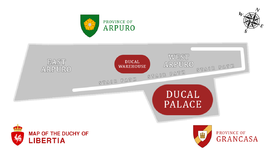
| Flag | Coat | Province | Code | Annexed | Pop. | Area (km2) | Provincial Marquis | |
|---|---|---|---|---|---|---|---|---|
| Grancasa | GRC | 1 December 2014 | 7 | 150 | D. Alexandro da Lomellina e Berenguer (Conservative) | |||
| Arpuro | ARP | 1 December 2014 | n/a | 300 | Diego Manrico di Gôvea e Lomellina (Conservative) | |||
| Vitruvio | VTV | 13 October 2015 | n/a | 1980 | Ser Richard du Pont (Liberal) | |||
| La Hire Colony | LHC | 8 March 2015 | n/a | 216000 | D. Tânya Correa D'Ornellas (Liberal) | |||
The Province of Grancasa is the capital city in the Duchy of Libertia. Most of the province's area is occupied by the Ducal Palace of Lomellina e Berenguer where the ducal family resides and work as the government body. The Province of Arpuro is a 300 m2 ground full of fruit trees wich are the main and only economic profit in Libertia. At the middle there is the Ducal Warehouse where the libertian family Lomellina-Berenguer stores it's older possessions. The Province of Vitruvio is the biggest division in Libertia and also the only touristic center. Vitruvio is the most vegetated area and the most busy. The La Hire Colony is the only libertian colony and ruthenia's extraterrestrial possession. La Hire is a solitary lunar mountain in the western Mare Imbrium. It is located to the northeast of the crater Euler, and to the west-northwest of Lambert.
Culture
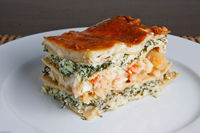

The libertian culture is largely influenced by the Lomellinian Culture, adopting most of the lomellinian traditions and customs as well as certain similarities with the Portuguese culture and Italian culture. These two great European influences made the libertian culture a romantic and flattering influence in the micronational world.
Libertia's citizens have three main goals, Discover, since the beginning, the libertian ancestors dedicated their lives into discovering new lands and new ways of living, libertians follow their actions into discovering new ways to improve it's citizen's lives, Create, the best works of art always inspired the best minds of mankind into re-writing history as we know today, libertarians create those inspiring pieces to allow their citizens to improve and Preserve, the world's biggest archives helped the people understand their ancestors into improving what was already done, libertians preserve that information, allowing the common citizen to learn more.
Libertians, mainly grancasian people practice somekind of artform wich is one of the greater values of the duchy, the ducal family is often seen painting, composing, decorating and even writing pieces of art. The duke himself describes himself as a polymath, a person whose expertise spans a significant number of different subject areas.
Cuisine
The national food of Libertia is the Lazanha de Peixe (English: Fish Lasagna) mixing the Lasagna from the Italian culture and the fish element from the Portuguese culture it's one of the most cherished dishes in Grancasa and is often the mais course in celebratory days, mainly Christmas and court dinners. Other traditional dishes are Bacalhau (Cod Fish), Canelones (Cannelloni) and all types of pasta and sauces.
Religion
The Ruthenian Constitution of 2015 guarantees freedom of religion, though having an official religion (Deism), most of the citizens are Catholic Christians with only the exception of the duke, the duke's brother and the duchess. This choice was made by the founder and prince of Lomellina bringing the genovese ideologies from the Italian Renaissance wich many geniouses adopted during their lifetime. Following this, Leonardo da Vinci was made a kind of "patron saint" of Lomellina and Libertia by the duke's great admiration for him.
A wide variety of nobles while following the Christian church, follow and study some paganism cults and mythologies. Rickard de Abbrant Luiz, the head of the Countdom in the libertian aristocracy, is a great follower of the Egyptian mythology and studied Egyptology for four years. Other nobles such as Lorenzo Di Nuna Baptista, Viscount of West-Arpuro, studied Nordic Mythology and Micheal Antoine Di Souza, Baron Di Souza studied Japanese mythology and Buddist theologies, living in Japan for almost 2 years from 2009 to 2011.
Language

In everyday use, Portuguese is used by the majority of the subjects. In Court, the official language while still the Portuguese, the English and French has also regular use, especially by the government and it is the only language used by the Ministry of Foreign Affairs of Ruthenia.
English is the official language after the referendum to decide which national language would be adopted by Ruthenia. Lusophones and Anglophones had split the ruthenian government, disputing for power, with the King favoring one against the other. The plebiscite ended with the victory of the supporters of the English language. With Portuguese limited to being the language of the royal court, the Lusophones began an exodus from Ruthenia. The Anglophones, led by the Duke of Erdene, tried to incite rebellion, later being punished.
Literature
Literature in Libertia started in early 2015, when it became popular to write occultist tales and horror stories. Since Libertia became part of the Kingdom of Ruthenia works about the libertian mythos have been written as well.
Common examples of occultist literature include the tales Queda (The Fall), Porta do Vazio Infinito (Door of the Infinite Abyss), Herdeiro dos Anjos (Heir of the Angels), Páginas de Palanzo (The Palanzo Pages)and many others by the novellist and occultist writer A. Heartless.
Symbols
The Flag

The current Flag of Libertia, also known as "The Black and Red", was designed by D. Guilherme da Lomellina e Berenguer on 21 March 2015 and officially updated on 22 March 2015 from the old flag, also designed by D. Guilherme on 1 December 2014.
The Flag is dived into three main colours; the upper section is represented by the color Black; the middle represented by the color White and the lower section by the color Red. At the center the middle section supports a Red Swiss-style shield with a White Rooster, the national animal of Libertia. The flag is 13 by 19 units in height and length wich makes the proportion 2:3.
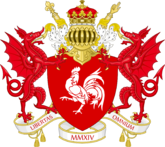
Coat of Arms
The Libertian Coat of Arms was designed by D. Guilherme da Lomellina e Berenguer on 22 March 2015. It consists of an Or helm wearing the ducal crown of Libertia, an Argent/Or mantle and two Or sceptres bearing a Christian hand and a fleur-de-lis. At the center we have a Gules Swiss-style shield representing an Argent Rooster supporting two Gules Dragons with Or tongues.
The Gules majority of the shield represents the human blood (wich is believed to be the fuel of life), the dragons are a symbol of representing the wonders and curiosity of the Libertian people towards the unknown world. The christian hand sceptre represents the Christian religion as an influence of past generations and the fluer-de-lis sceptre represents the influence of the present and modern ideologies regarding religion and reason. The Argent Rooster represents the national-animal of Libertia in regards of the Province of Arpuro that supported a large quantity of roosters and chickens in past generations.
The Anthem
The National Anthem is a part of the symphony "Carmen - Overture" composed by Georges Bizet. This piece of musical art was introduced on 3 March 1875 in Opéra-Comique, Paris and implemented as the Libertian Anthem on 11 January 2015.
Demographics
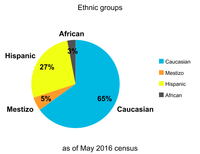
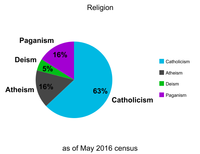
Ethnic groups
Language
- Portuguese - 73%
- English - 25%
- Italian - 2%
Religion
- Catholicism - 63%
- Atheism - 16%
- Deism - 5%
- Paganism - 16%
See also
- Kingdom of Ruthenia
- Principality of Lomellina
- Lomellinian Monarchy
- D. Guilherme da Lomellina e Berenguer
- House of Lomellina e Berenguer


